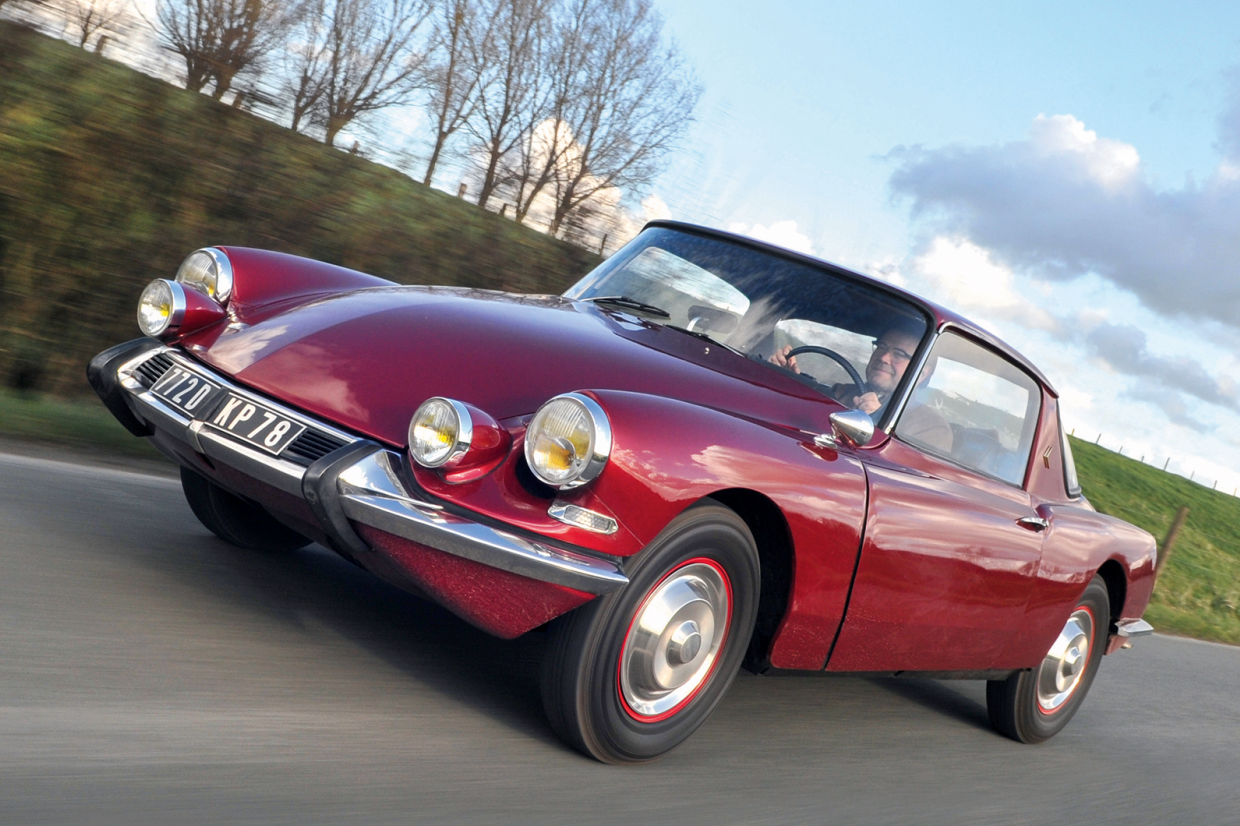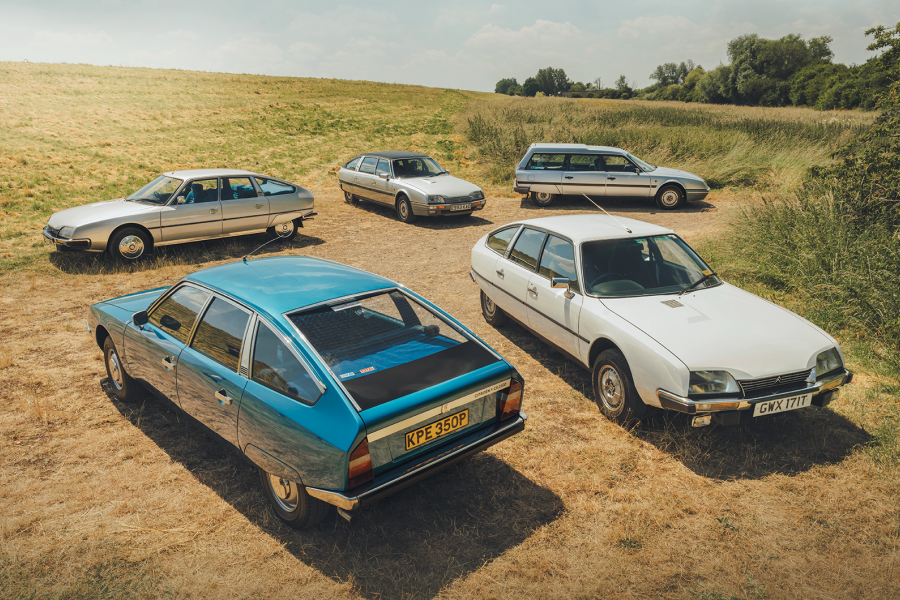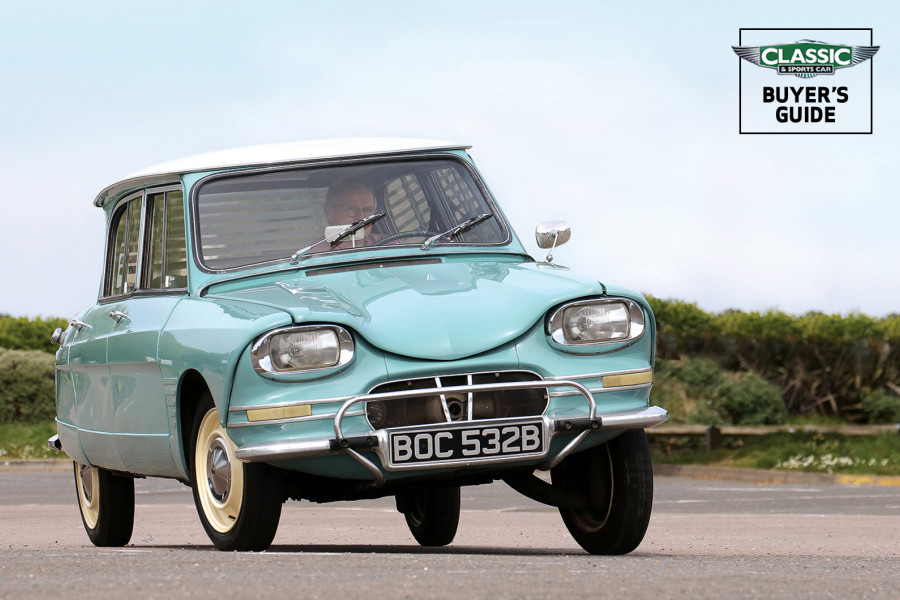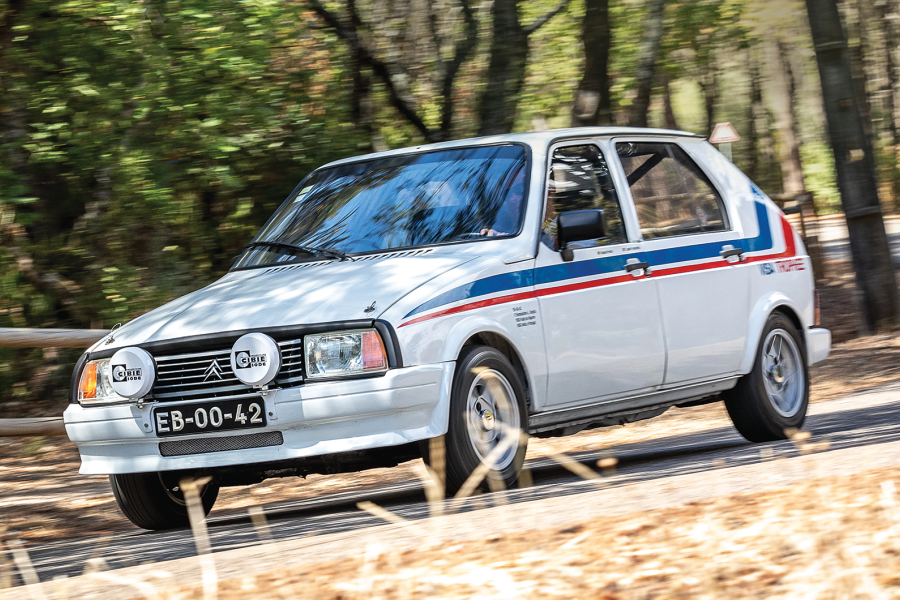“In retaliation, they refused to continue supplying parts but, because he was close to Belgium, he sourced components there instead.”
In total, 13 Bossaert GT 19s were built between 1960-’64
In the end, Gété didn’t need huge supplies from Citroën because production would be limited to 13 examples, according to the best estimates.
“After 11 cars, my grandfather noticed that it was mainly him who was boiling the pot,” says Frédéric.
“He’d had enough and decided to quit. Mechanics interested him above all, and he continued with his workshop until retirement in 1977.”
Among the 13 cars built from 1960-’64 was a convertible with faired-in headlights and the final two, including a shorter and less elegant cabriolet, were produced in ’66 after the closure of Gété with the final parts received from Frua.
The Jaeger dash adds an oil-pressure gauge and rev counter to the Bossaert GT 19’s interior
In addition to a different windscreen on early cars, there were detail differences throughout production, be it wheels, badges, side mouldings or fuel fillers.
Oddly, however, almost all of the Bossaert DSs have since disappeared, with many meeting a sticky end in accidents due to their edgy handling on the limit.
Today, just two survive: the final convertible, and the coupé shown here.
The ninth GT 19 built, it was sold on 21 October 1963 to Gérard Chevalier, a La Garenne property developer who had bought his first Bossaert DS in June the previous year.
The Bossaert GT 19’s nose is carried over from the DS saloon
“After that, it belonged to the well-known Citroën collector Denys Joannon for a long time,” says Pund.
“I had visited him in 1994 and the coupé caught my eye: living here in the north, the history of Bossaert interested me.
“He told me that he had noticed it in Paris in 1982 and put a note under the windscreen.
“I finally managed to acquire it in November 2021.
“It’s the most Italian of the DS coupés: the front is signed by Bertoni and the rear by Frua!”
Only two Bossaert GT 19s still remain today
To regain its full personality, all that remains is to install an engine that honours Bossaert’s legacy.
With 140bhp in this shortened chassis, it would be a GT few contemporaries could match.
Sadly, by the time Citroën woke up to the idea with the SM, it was already too late…
Words and images: Serge Cordey
Thanks to Christoph Pund, La Galerie des Damiers, Patrick & Frédéric Bossaert
Mademoiselle Van Der Meersch’s GT
Period Bossaert brochures insisted that the GT 19 was easy for madame to drive, and during the 1970s leading Citroën specialist Olivier de Serres had the rare opportunity to sample a coupé ordered new by the daughter of novelist Maxence Van der Meersch.
“It was based on a 1962 ID19,” recalls, de Serres, “and wasn’t particularly tuned mechanically.
“It was wine red with mauve seats, as specified by Miss Van der Meersch.”
Miss Van der Meersch owned a wine red Bossaert GT 19
“It was quite fun to drive because it was very comfortable in corners and flowed through bends well; on the other hand, you felt that top speed in a straight line was not its forte and, with its shorter wheelbase, the fine balance of the DS had partially disappeared,” describes de Serres.
“The car was last sold in The Netherlands, then already very damaged by corrosion, and sadly wasn’t restored as it deserved to be.”
Grand designs on the Déess
The stubby 1959 Ricou coupé was larger and clumsier than Pietro Frua’s design.
Pietro Frua’s original styling sketch for the ‘Coupé 2 posti’, which already shows the horizontal chevrons on the B-pillar.
An official press photo of the Bossaert GT 19.
The presentation of the first prototype at Montlhéry, October 1960.
It featured a small bonnet scoop, a different ’screen assembly and fixed quarterlights.
One of the first cars constructed: the wheel rims, badging and side mouldings differ from later production models.
Bossaert also produced a convertible with enclosed headlights, in c1964.
A second car was built after Gété closed.
Our featured car photographed during the 1970s, after it was repainted white and fitted with ‘ball’ headlights.
Images: Christophe Pund, Patrick & Frédéric Bossaert
READ MORE
Citroën DS19: the green goddess
Classic French cars we'd love to own
Citroën GS Pallas vs Vanden Plas 1.7: avant-garde for the masses





























